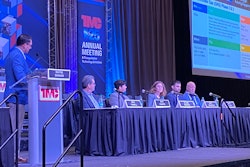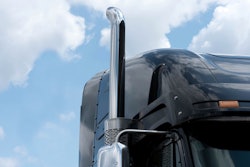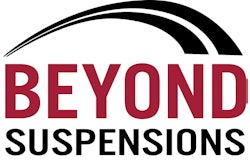
The daunting and potentially crippling sales challenges of EPA Phase 3 GHG regulations on medium- and heavy-duty vehicles could be eliminated before they ever reach the market.
Just a day after a panel discussion at ATA's Technology & Maintenance Council (TMC) Annual Meeting in Nashville addressed how EPA Phase 3 GHG regulations and California's Advanced Clean Trucks (ACT) rule will require the trucking industry to sell ZEVs as a growing share of new truck sales, EPA Administrator Lee Zeldin announced Wednesday the agency will undertake 31 historic actions in the “greatest and most consequential day of deregulation in U.S. history,” to advance President Trump’s Day One executive orders.
Among those actions will be the reconsideration of Model Year 2027 and Later Light-Duty and Medium-Duty Vehicles regulation and Greenhouse Gas Emissions Standards for Heavy-Duty Vehicles.
In announcing the plans, the EPA states while its core mission is protection the environment, the “the agency is committed to fulfilling President Trump’s promise to unleash American energy, lower cost of living for Americans, revitalize the American auto industry, restore the rule of law and give power back to states to make their own decisions.”
[RELATED: Ohio Senator introduces bill to scrap EPA Phase 3]
“The American auto industry has been hamstrung by the crushing regulatory regime of the last administration. As we reconsider nearly one trillion dollars of regulatory costs, we will abide by the rule of law to protect consumer choice and the environment,” Zeldin says.
In addition to imposing over $700 billion in regulatory and compliance costs, the EPA states the Model 2027 rules provided the foundation for the Biden-Harris electric vehicle mandate that takes away Americans’ ability to choose a safe and affordable car for their family and increases the cost of living on all products that trucks deliver.
The trucking industry immediately reacted positively to the news.
“We commend President Trump and EPA Administrator Zeldin for restoring common sense to our nation’s environmental laws and demonstrating bold leadership on this critical issue that affects not only the 8.5 million men and women who work in trucking, but all Americans,” says ATA President and CEO Chris Spear. “GHG3 in its current form is unachievable given the state of battery-electric technology and the sheer lack of charging infrastructure. This rule has been an albatross for the trucking industry, threatening to reduce equipment availability, increase costs for businesses and consumers, and cause major supply chain disruptions.”
Spear adds, “It is critically important the federal government set realistic standards with achievable targets and timelines. Prior to the imposition of GHG3, EPA used a collaborate process that served the agency and the trucking industry well and allowed us to make monumental progress to reduce emissions. As a result, 60 trucks today emit the same amount as one truck manufactured in 1988.”
[RELATED: Trump EPA orders review of California emission waivers]
The EPA also reported Wednesday it is reevaluating the other parts of the Biden EPA’s “Clean Trucks Plan.” This includes the 2022 Heavy-Duty Nitrous Oxide (NOx) rule, which the agency states results in significant costs that will make the products trucks deliver, like food and other household goods, more expensive.
“The trucking industry has made significant improvements on tailpipe emissions over the last several decades, and we will work with the administration on reasonable and achievable solutions that continue to deliver cleaner commercial vehicles moving forward. We will also continue to advocate for a national regulatory framework that is technology neutral and achieves the greatest benefit for the environment without unnecessarily burdening the industry, the economy, and all consumers of goods in our country,” wrote the Clean Freight Coalition.
“The trucking industry welcomes the resumption of this productive partnership with EPA,” adds Spear. “Crafting a new national rule will prevent states like California from attempting to make an end run around the administration, creating a patchwork of impossible mandates that would jeopardize our economy. ATA looks forward to working with the Trump Administration to develop realistic, technology-neutral federal emissions standards that will benefit our environment, preserve and create jobs, and set our industry and supply chain up for success.”
The National Automobile Dealers Association (NADA) also spoke out positively about the news.
“Our current emissions regulatory framework is completely out of sync with any realistic assessment of consumer demand for electric cars. If not altered, these EV mandates will lead to extreme limitations on vehicle choice, all while making the smaller pool of available vehicles even more expensive,” NADA President and CEO Mike Stanton said Wednesday.
“This is already occurring on the heavy-duty truck side and leading to severe consequences for the market and truck customers. Truck dealers have extremely limited product availability right now due to overburdensome EV mandates that failed to recognize the particular hurdles involved with early stage deployment of zero-emission technology, including higher prices, a lack of charging infrastructure, and limited operational capability.
He adds, “NADA looks forward to working with the Trump Administration to reduce emissions standards for all vehicle classes to a level the market can actually bear.”










